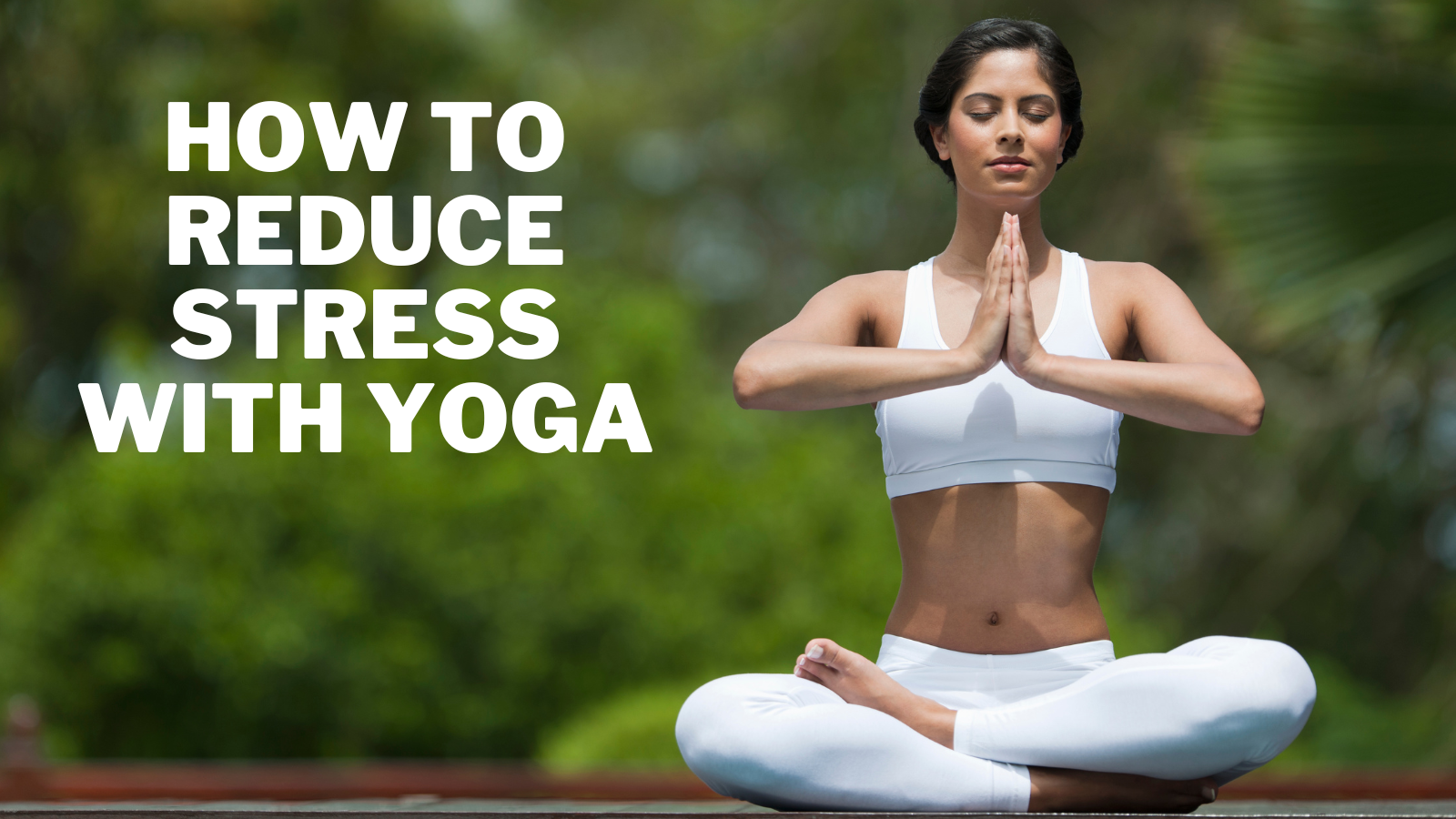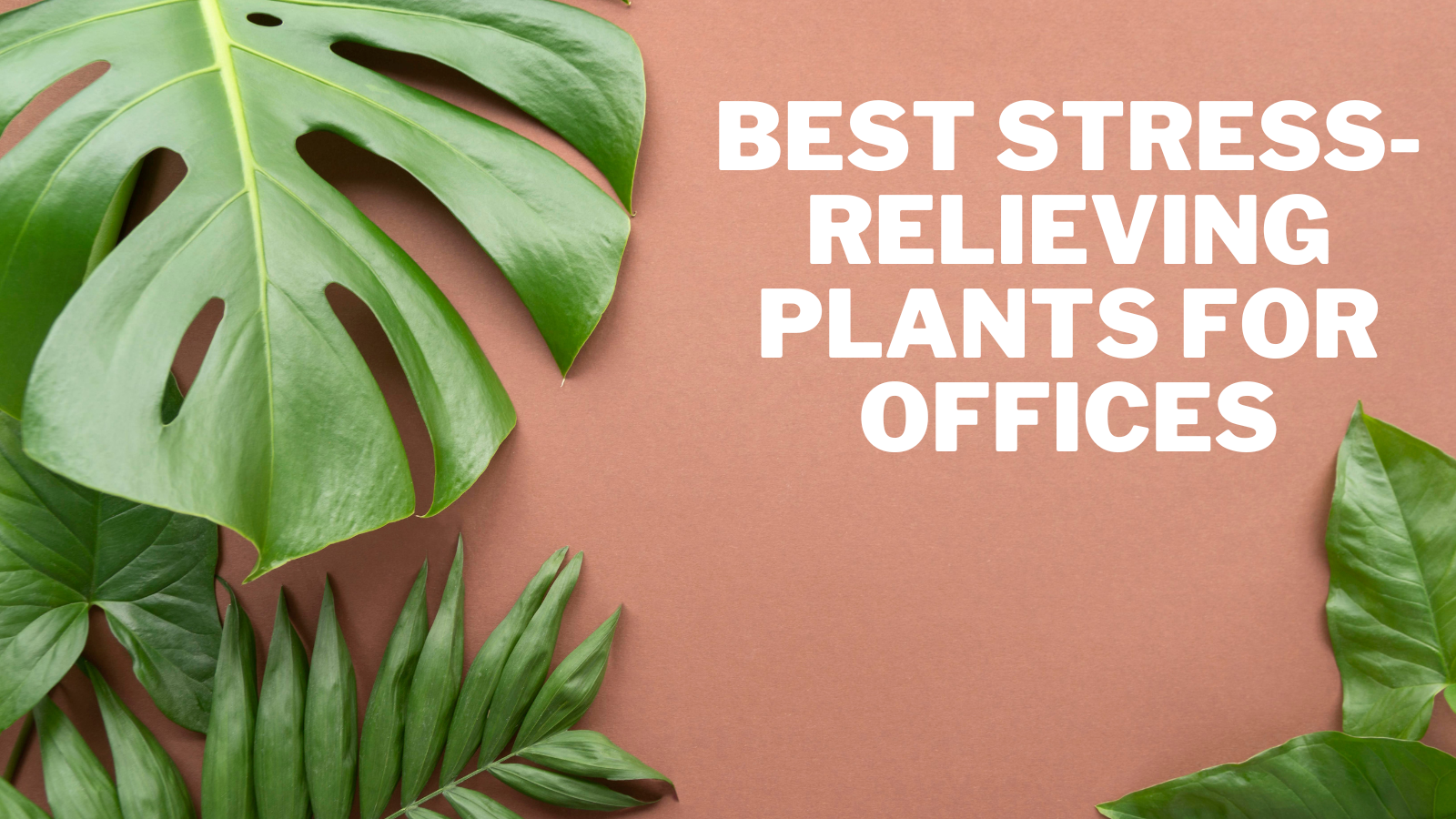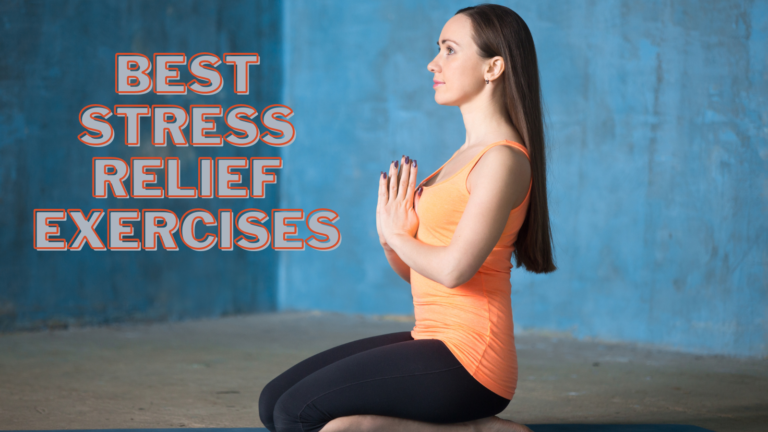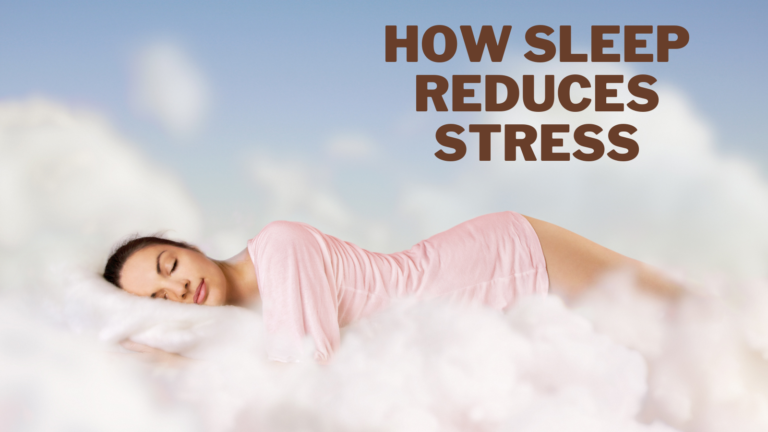How To Reduce Stress With Yoga
How To Reduce Stress With Yoga
Stress is a common issue many people face daily, and it can negatively affect their physical and mental health. One effective way to reduce stress is through the practice of yoga.
Yoga combines physical postures, breathing techniques, and meditation to promote relaxation and reduce tension in the body and mind.
This blog post will explore effective ways to use yoga to reduce stress and improve overall well-being.

The Benefits Of Yoga For Stress Reduction
Yoga is an ancient practice that has gained widespread popularity recently as a form of exercise, meditation, and stress relief.
The benefits of yoga for stress reduction are well documented, and practitioners have reported feeling more relaxed, calmer, and better equipped to handle the challenges of daily life.
In this blog post, we will explore the various ways in which yoga can help to reduce stress and improve overall well-being.
1. Yoga Promotes Relaxation
One of the primary benefits of yoga is its ability to promote relaxation. Through a series of physical postures, breathing exercises, and meditation techniques, yoga can help to calm the mind and reduce stress levels.
Studies have shown that regular yoga practice can decrease the levels of the stress hormone cortisol in the body, leading to a sense of calm and relaxation.

2. Yoga Improves Sleep Quality
Another way yoga can help reduce stress is by improving sleep quality. Stress is a common cause of sleep problems, and many people find it difficult to fall or stay asleep when stressed.
Yoga has been shown to improve sleep quality by promoting relaxation and reducing anxiety levels.
3. Yoga Helps To Build Resilience
Another benefit of yoga for stress reduction is its ability to build resilience. Through regular practice, yoga can help to develop a sense of inner strength and calmness that can be carried over into daily life.
This can help individuals cope better with stress and adversity and bounce back quickly from difficult situations.
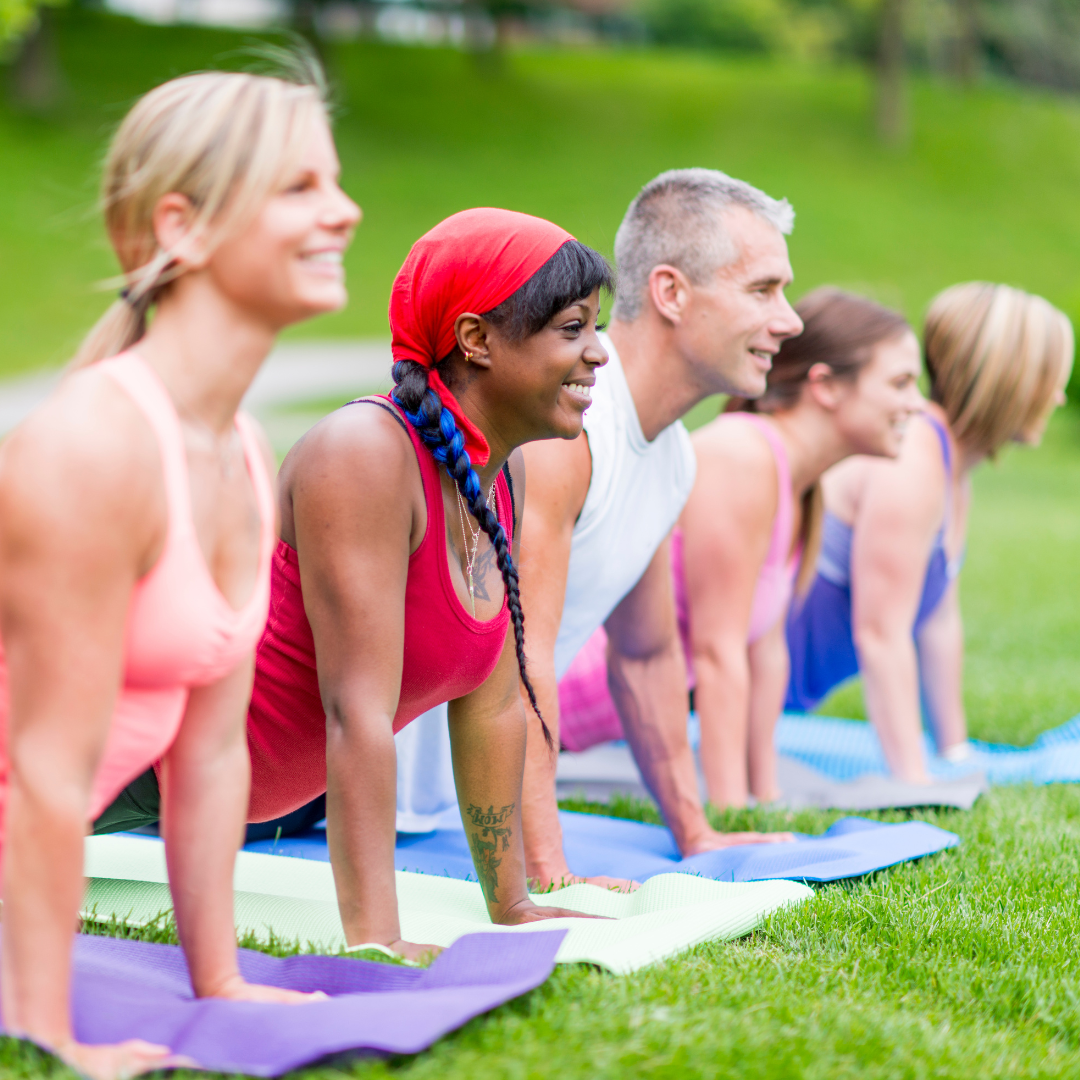
4. Yoga Provides A Sense Of Community
Yoga classes allow individuals to connect with others who share their interests in the practice. This sense of community can be particularly beneficial for those dealing with stress, providing a supportive environment to learn and grow.
5. Yoga Improves Overall Well-Being
Finally, it is worth noting that yoga can positively impact overall well-being. Regular yoga practice has been shown to reduce symptoms of anxiety and depression, improve cardiovascular health, and enhance general physical fitness.
These benefits can contribute to a greater sense of well-being and a reduced risk of chronic disease.
Yoga is a powerful tool for stress reduction and overall well-being. By promoting relaxation, improving sleep quality, building resilience, providing a sense of community, and improving overall health, yoga can help individuals cope with stress better and lead healthier, happier lives.
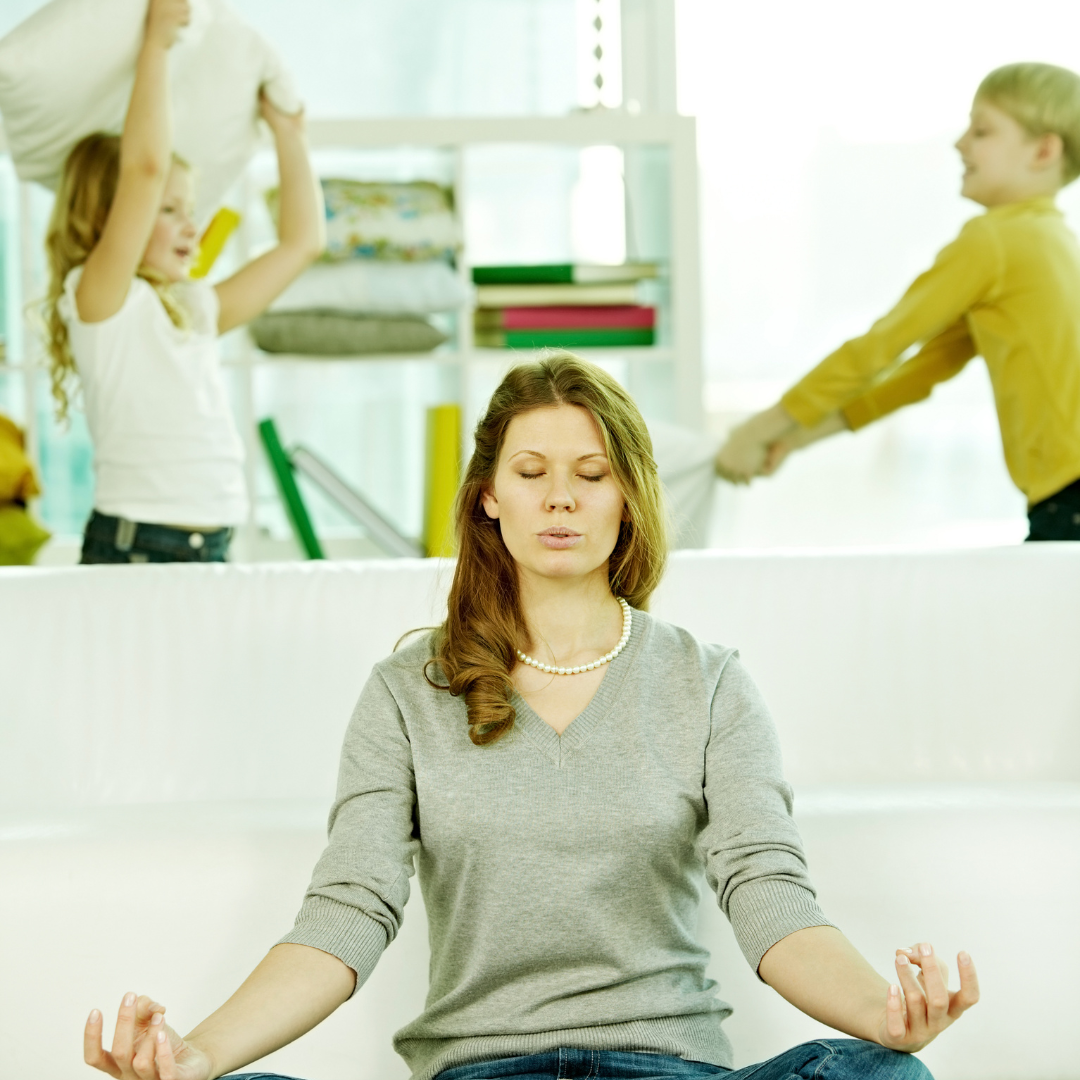
6. Yoga Reduces Anxiety And Depression
A growing body of research suggests that yoga can be an effective tool for reducing symptoms of anxiety and depression.
Some studies have found that regular yoga practice can lead to significant reductions in anxiety and depression symptoms, as well as improvements in overall mood and well-being.
One way yoga can help reduce anxiety and depression is by promoting relaxation and mindfulness.
By focusing on the breath and movement, yoga can help individuals release tension and let go of negative thoughts and emotions, leading to a greater sense of calmness and well-being.
Yoga can also help to improve self-awareness and self-acceptance, which can be helpful for individuals struggling with anxiety and depression.
In addition to promoting relaxation and mindfulness, yoga can help regulate the nervous system, positively impacting anxiety and depression symptoms.
Certain yoga poses and breathing exercises can activate the parasympathetic nervous system, which regulates the body's rest and digestion response.
This can help reduce the impact of stress on the body and promote a sense of calmness and relaxation.
7. Yoga Enhances Mindfulness
Yoga can enhance mindfulness by allowing you to be fully present and engaged in the moment.
By focusing on breathing and movement, yoga can help individuals tune out distractions and become more mindful.
Mindfulness has been shown to reduce stress, anxiety, and depression and can help individuals to manage their emotions better and improve their relationships.

8. Yoga Offers A Break From Technology
In our modern world, we are often surrounded by technology, which can be a source of stress and distraction.
Yoga offers a welcome break from screens and devices, allowing individuals to disconnect and focus on their breath and movement.
This can be particularly beneficial for those struggling with technology addiction or constantly checking their phones or emails.
9. Yoga Provides An Outlet For Self-Expression
Yoga offers a creative outlet for self-expression, allowing individuals to explore their bodies, emotions, and thoughts in a safe and supportive environment.
This can be particularly helpful for those who struggle to express themselves verbally or feel disconnected from their bodies.

10. Yoga Is Adaptable To Individual Needs
One of the great things about yoga is its adaptability to individual needs and abilities. Whether you are a beginner or an experienced practitioner, there is a yoga style and level that can meet your needs. This makes yoga accessible regardless of age, fitness level, or physical ability.
11. Yoga Teaches Valuable Life Skills
Yoga can teach valuable life skills that can be applied beyond the mat. These include self-awareness, compassion, resilience, and mindfulness, which can help individuals to better navigate the challenges of daily life and build more meaningful relationships.
Yoga is a powerful practice that offers numerous benefits for stress reduction and overall well-being.
By promoting relaxation, improving sleep quality, building resilience, enhancing mindfulness, providing a break from technology, offering an outlet for self-expression, being adaptable to individual needs, and teaching valuable life skills, yoga can help individuals lead healthier, happier lives.
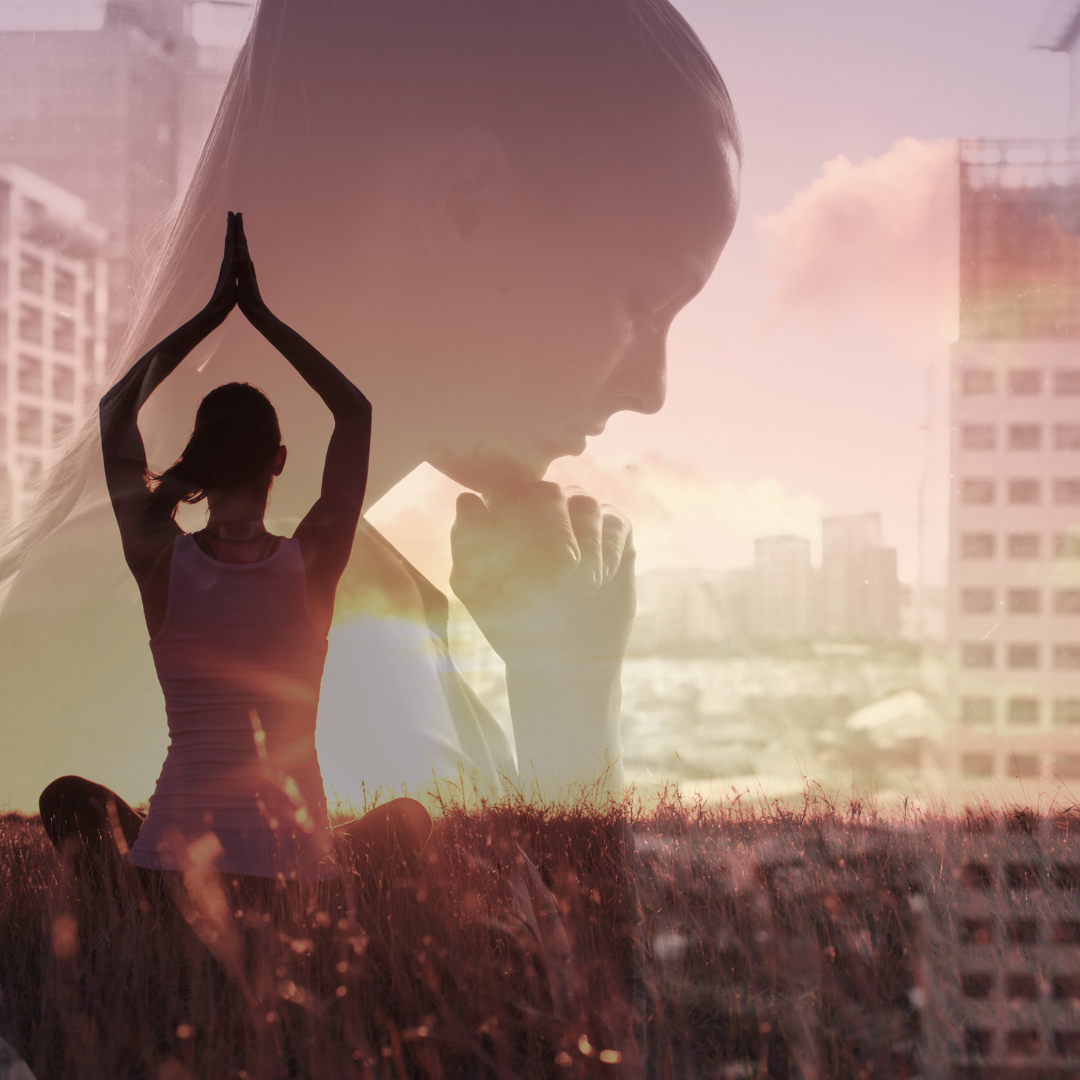
How To Reduce Stress With Yoga
Yoga is a mind-body practice that combines physical postures, breathing techniques, and meditation to help reduce stress and promote relaxation. Here are some ways yoga can help reduce stress:
1. Practice Yoga Regularly
Consistent yoga practice reduces stress and promotes relaxation. Practicing yoga regularly can help your body and mind adapt to the physical and mental demands of the practice, leading to a more relaxed state of mind and body.
When practicing yoga regularly, you’ll start to notice the physical benefits of the practice, such as increased flexibility, strength, and balance.
You’ll also notice the mental benefits, such as reduced stress and anxiety, improved focus, and increased self-awareness.
Practicing yoga at least three times per week is recommended for maximum benefits. However, practicing yoga once or twice a week can positively impact your well-being.
Consistency is key when it comes to reducing stress with yoga. By making yoga a regular part of your routine, you’ll be better equipped to handle stress and maintain a relaxed mind and body.
Consider setting a regular yoga schedule that works for you and your lifestyle. Whether it’s practicing first thing in the morning or before bed, find a time that works for you and stick with it.
By practicing yoga regularly, you’ll be able to reduce stress and promote relaxation in your daily life.
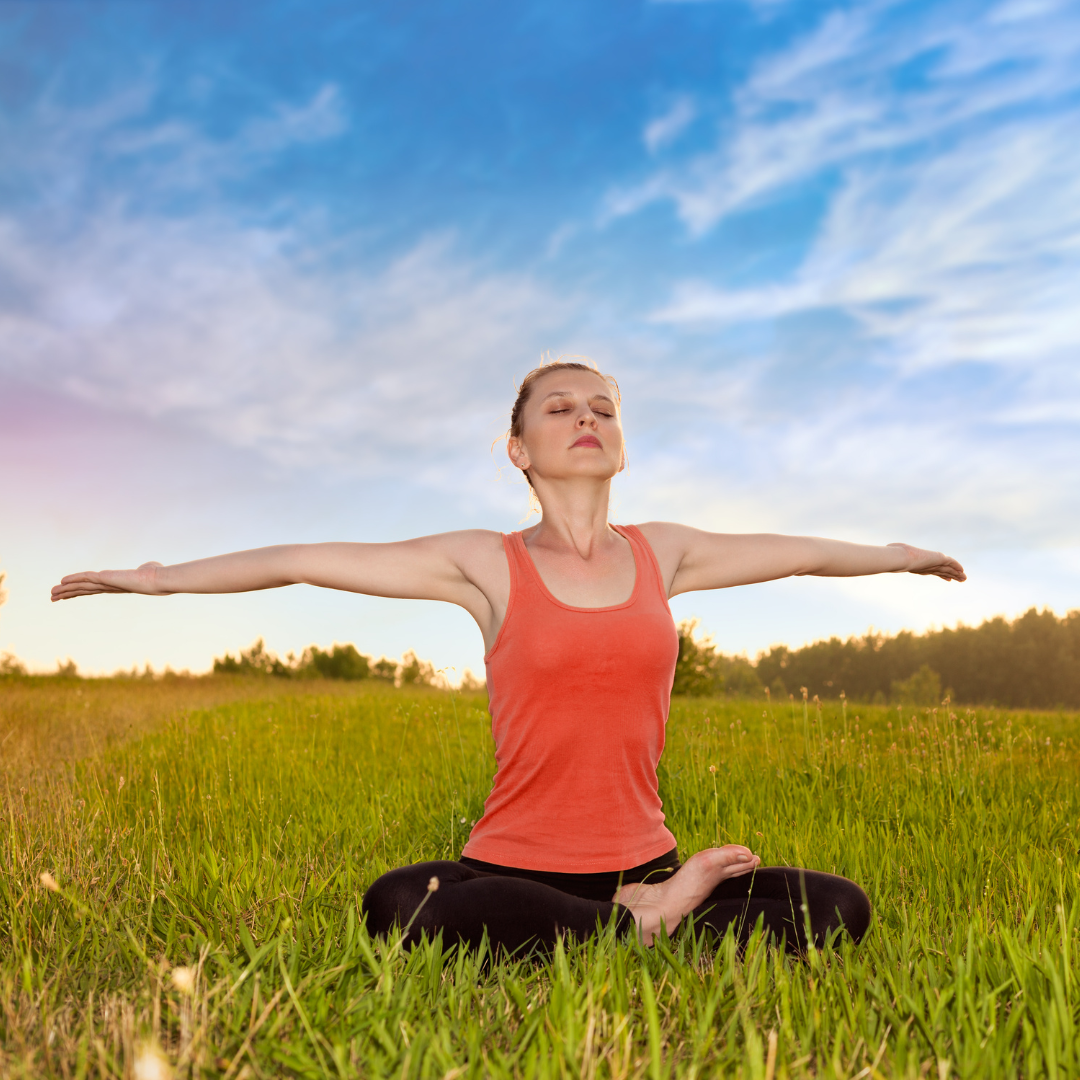
2. Focus On Your Breath
Breathing is an integral part of yoga, and focusing on your breath is essential for reducing stress and promoting relaxation. Deep breathing techniques like pranayama can help calm your mind and reduce stress.
When practicing yoga, focusing on breathing and taking slow, deep breaths are important. This can help calm your nervous system and reduce anxiety and stress.
One of the most common breathing techniques in yoga is Ujjayi breath, which involves breathing in and out through your nose while constricting the back of your throat. This creates a soft, ocean-like sound to help calm your mind and promote relaxation.
Another common breathing technique in yoga is alternate nostril breathing, which involves alternating between breathing in and out through one nostril at a time. This can help balance the left and right sides of your brain and reduce stress and anxiety.
By focusing on your breath during your yoga practice, you can also improve your ability to focus and concentrate.
This can help you better manage stress in your daily life and maintain a sense of calm and relaxation.
Incorporating breathing exercises into your daily routine can reduce stress and promote relaxation.
Consider taking a few deep breaths throughout the day or practicing a short breathing exercise when feeling stressed or overwhelmed.
Overall, focusing on your breath is an essential component of reducing stress with yoga.
Incorporating deep breathing techniques into your yoga practice and daily routine can improve your ability to manage stress and promote relaxation.

3. Incorporate Meditation
Meditation is a powerful tool for reducing stress and promoting relaxation. It involves focusing your attention on a specific object, thought, or activity to help calm your mind and reduce feelings of stress and anxiety.
Incorporating a few minutes of meditation at the end of your yoga practice can promote relaxation and reduce stress.
By quieting your mind and focusing on your breath, you can create a sense of calm and peace that can carry over into your daily life.
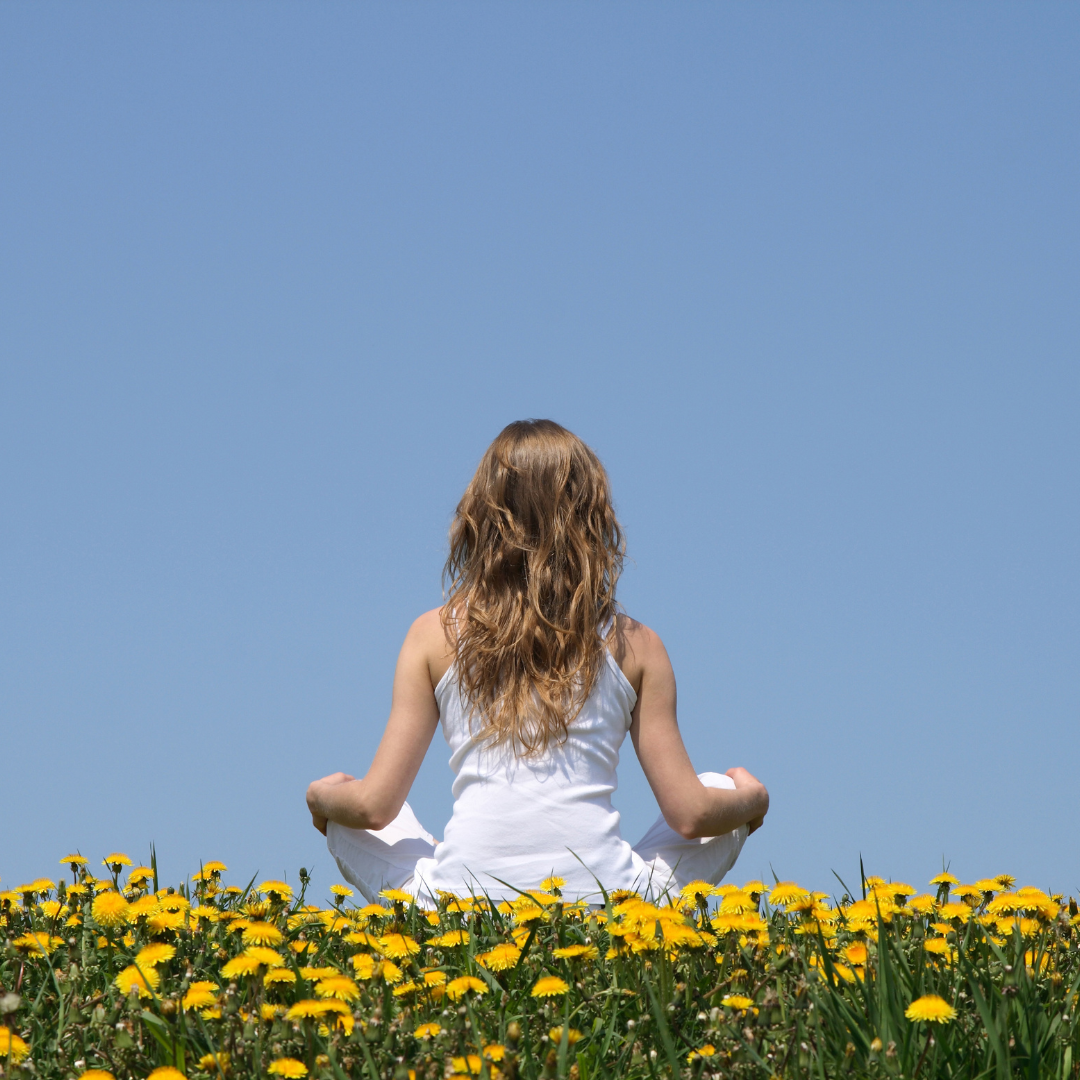
4. Practice Mindfulness
Mindfulness is a mental practice that involves intentionally paying attention to the present moment with openness, curiosity, and acceptance, without judgment or distraction.
It can be practiced in various ways, such as meditation, breathing exercises, or simply focusing on your senses and surroundings.
Research has shown that practicing mindfulness can positively impact mental and physical health, including reducing stress, anxiety, and depression, improving focus and attention and enhancing emotional regulation and well-being.
You can find a quiet and comfortable place to sit or lie down to practice mindfulness. You can then focus your attention on your breath, noticing the sensations of the air moving in and out of your body.
When your mind inevitably wanders, gently redirect your attention back to your breath without judgment or frustration.
You can also try a body scan meditation, systematically focusing on each part of your body and noticing any physical sensations or tensions.
Another option is to practice mindful awareness of your thoughts and emotions, noticing them as they arise and letting them go without getting caught up in them.
Regularly practicing mindfulness, even for just a few minutes each day, can develop a greater sense of calm and clarity and improve your overall well-being.
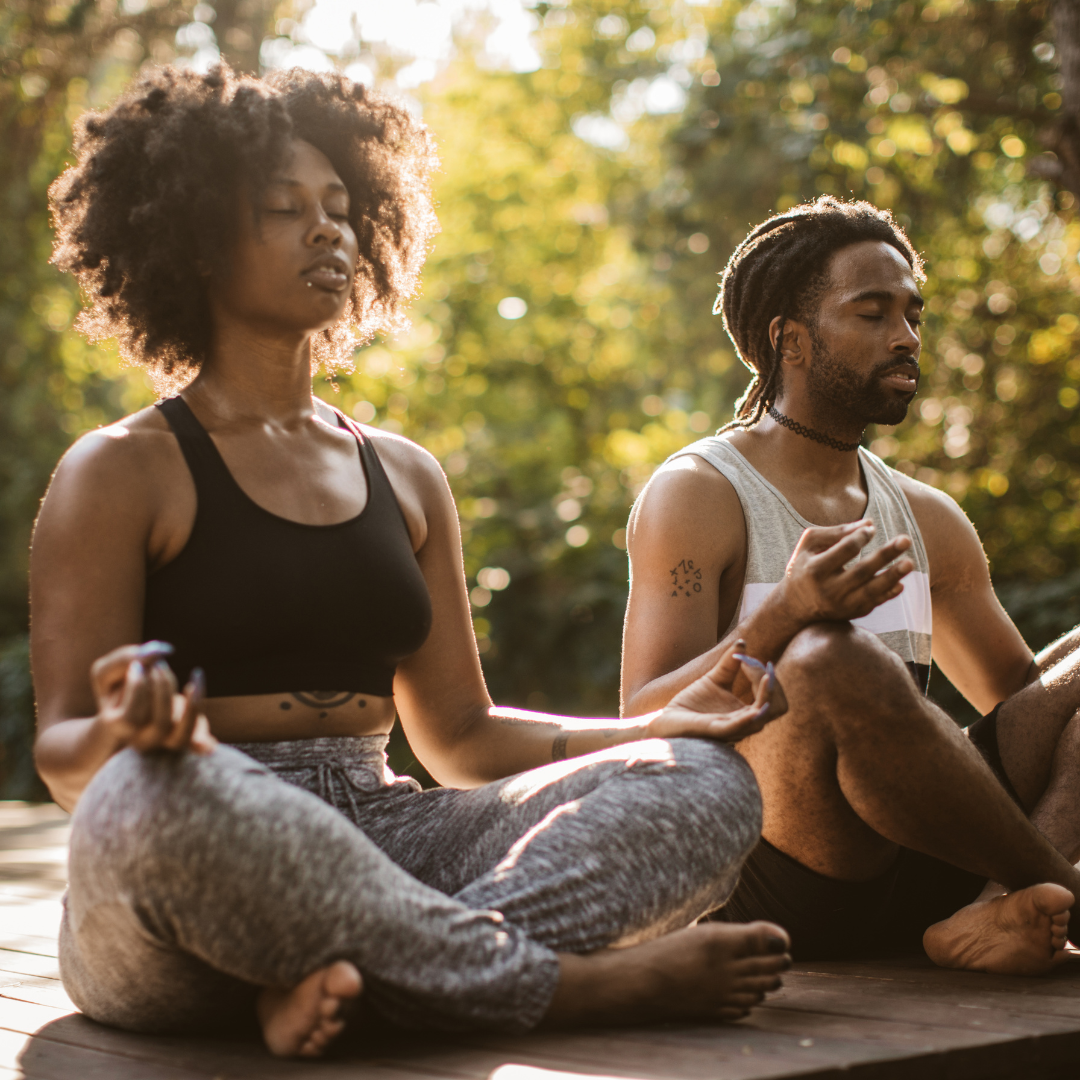
5. Attend A Yoga Class
Attending a yoga class can effectively reduce stress and promote relaxation. Yoga is a physical practice that combines various postures, breathing techniques, and meditation to improve physical and mental well-being.
One of the main benefits of attending a yoga class is that it provides a supportive and calming environment that can help promote relaxation and reduce stress.
Yoga classes typically occur in a peaceful setting, such as a studio or community center, with dimmed lighting and soothing music.
The instructor typically provides verbal guidance to help students relax and focus on their breath while leading them through various yoga poses.
Research has shown that yoga can positively impact mental health, reducing stress, anxiety, and depression.
This is because yoga helps activate the parasympathetic nervous system, which is responsible for the body's relaxation response.
Practicing yoga can also increase levels of the neurotransmitter GABA, which helps regulate mood and promote relaxation.
Yoga classes are available in various styles and levels, from gentle restorative classes to more vigorous and challenging practices.
It is important to find a class that fits your experience level and physical abilities and to communicate with the instructor about any injuries or limitations you may have.
Attending a yoga class can greatly reduce stress and promote relaxation while improving physical strength, flexibility, and balance.
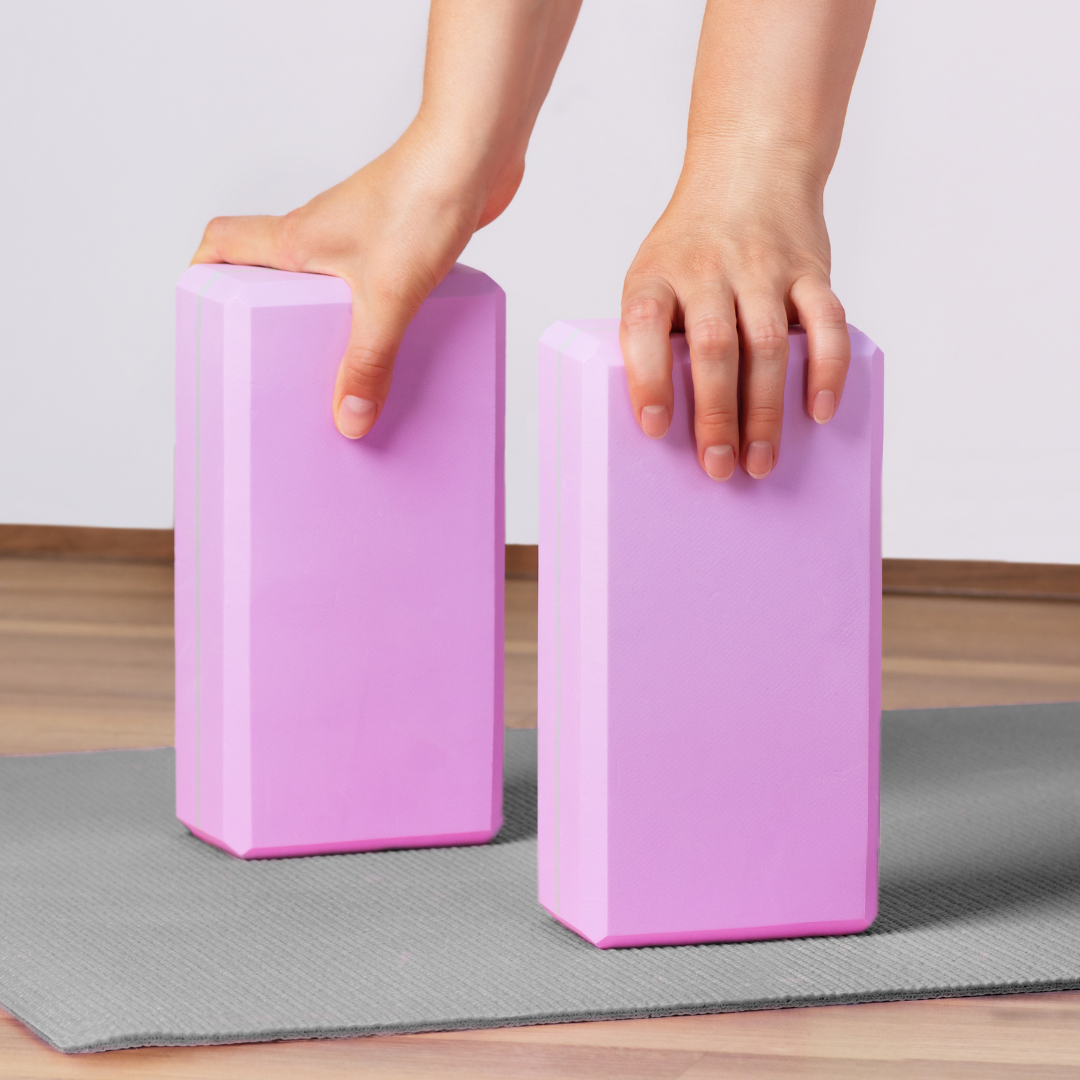
6. Use Props
Using yoga props, such as blocks, straps, blankets, and bolsters, can effectively support your body and enhance your yoga practice.
Props can help you get into the correct yoga posture and reduce tension in your body, making the practice more accessible and comfortable.
Blocks, for example, can bring the ground closer to you, making certain poses more accessible.
For instance, if you have tight hamstrings, using a block under your hands in a standing forward fold can help you maintain proper alignment and ease tension in your lower back.
Straps can be used to help you reach further in certain poses, such as seated forward folds or seated twists.
You can gradually increase your flexibility and mobility without straining your muscles or joints by looping the strap around your feet or legs.
Blankets and bolsters can be used for support and comfort in restorative yoga poses, such as savasana or child's pose.
By placing a bolster under your knees or a blanket under your head, you can relax more deeply into the pose and release tension in your body.
Using props in your yoga practice can also help prevent injury and allow you to modify poses to fit your body's needs.
It is important to communicate with your yoga instructor about any injuries or limitations you may have, as they can guide you on how to use props effectively and safely.
Using props can help you deepen your yoga practice and experience greater physical and mental benefits.
You can find greater ease and relaxation in your practice by supporting your body and reducing tension.

7. Incorporate Yoga Into Your Daily Routine
Incorporating yoga into your daily routine can be an effective way to reduce stress and promote relaxation. Practicing for a few minutes daily can provide numerous physical and mental benefits.
One way to incorporate yoga into your daily routine is to establish a regular practice time, such as in the morning or evening. This can help you establish a routine and make yoga a consistent part of your day.
Another way to incorporate yoga into your daily routine is to start small and build up gradually.
You can begin with a simple breathing exercise or a few gentle stretches and progressively increase the duration and intensity of your practice as you become more comfortable and confident.
Practicing yoga regularly can help reduce stress by promoting relaxation and calming the mind. Yoga can also improve physical fitness, flexibility, and balance while reducing muscle tension and improving circulation.
There are various types of yoga practices that you can incorporate into your daily routine, including Hatha, Vinyasa, restorative, or Yin yoga.
It is important to choose a practice that fits your experience level and physical abilities and to communicate with your yoga instructor about any injuries or limitations you may have.
Incorporating yoga into your daily routine can be a simple and effective way to improve your physical and mental well-being. By establishing regular practice, you can experience greater calm, relaxation, and overall health.

Conclusion
Incorporating yoga into your daily routine can reduce stress and promote relaxation. By practicing yoga, you can release tension in the body and calm the mind, which can help improve overall physical and mental well-being.
Whether you attend a yoga class, use props, or practice at home, there are various ways to incorporate yoga into your life and experience its many benefits.
Making yoga a consistent part of your routine can reduce stress, increase resilience, and improve your overall quality of life. So take a deep breath, roll out your mat, and let yoga help you find peace and calm daily.
I trust you enjoyed this article about How To Reduce Stress With Yoga. Please stay tuned for more blog posts to come shortly. Take care!
JeannetteZ
>>>Please click here to read my all-inclusive article about Lessons That Will Teach You All About Stress<<<
>>>Are you interested in Natural Healing And Stress Relief through Herbs? Please click here for my #1 Recommendation<<<
Your Opinion Is Important To Me
Thoughts? Ideas? Questions? I would love to hear from you. Please leave me your questions, experiences, and remarks about this article on How To Reduce Stress With Yoga in the comments section below. You can also reach me by email at Jeannette@Close-To-Nature.org.
Disclosure
This post may contain affiliate links. I earn from qualifying purchases as an Amazon Associate and other affiliate programs. Please read my full affiliate disclosure.
You might also enjoy these blog posts:
Best Relaxing Vacations For Couples
Best Vacations For Relieving Stress
Stress vs Strain In The Human Body
Why Do Cats Get Stressed, And How Can We Help?

